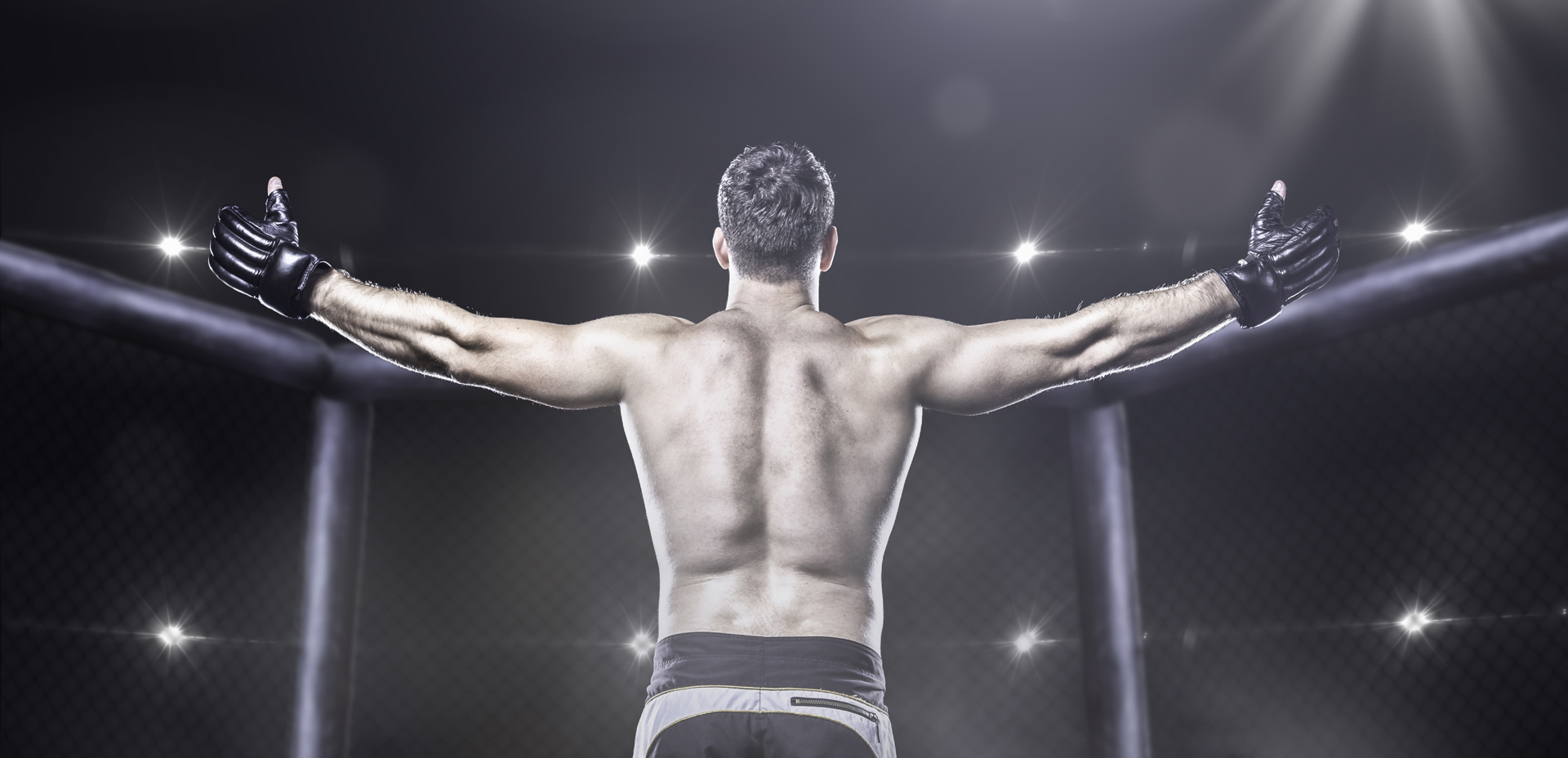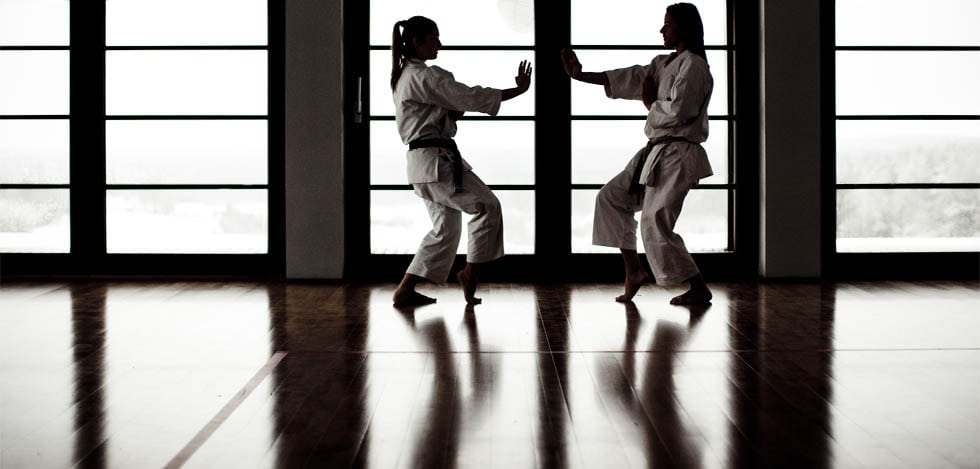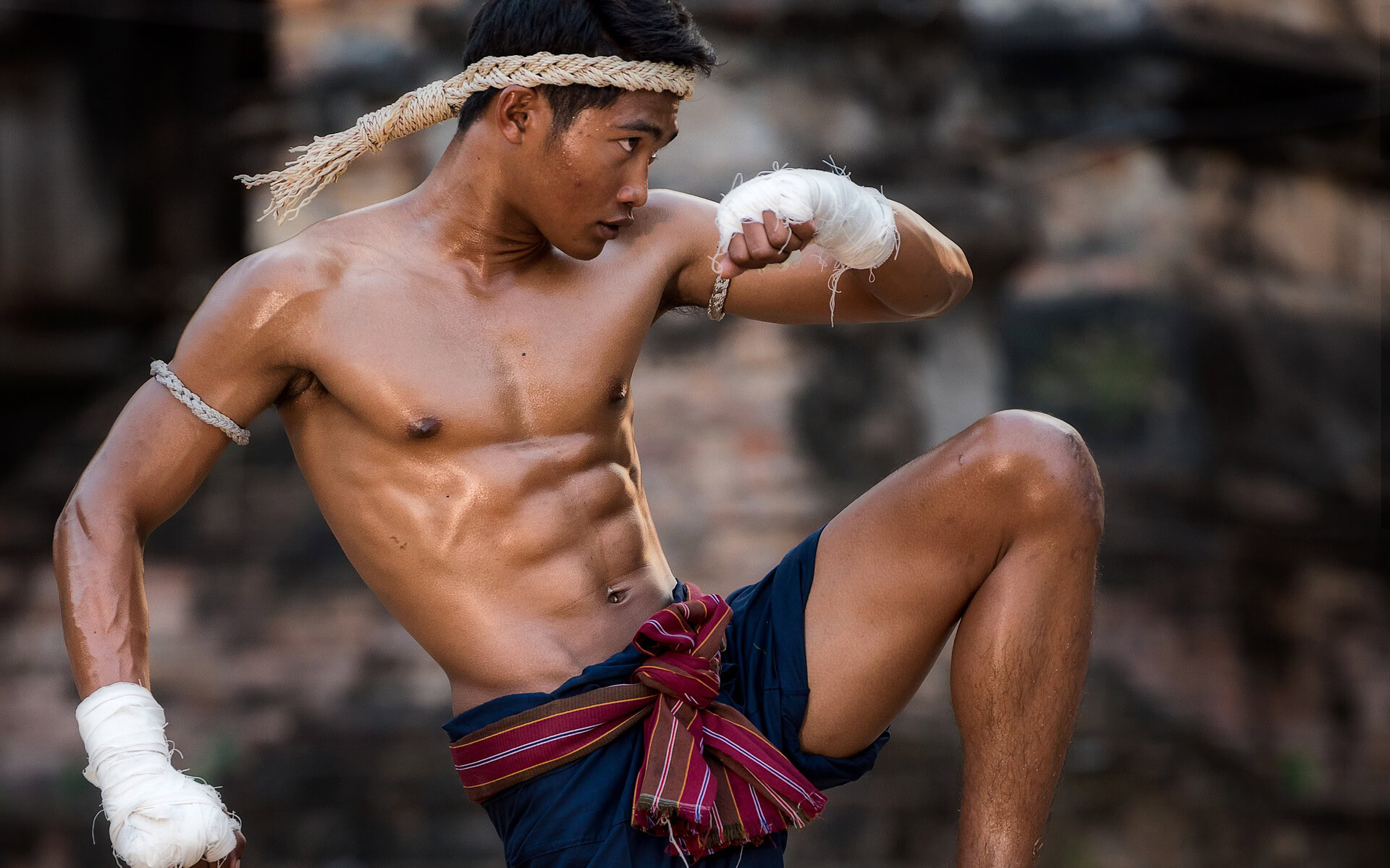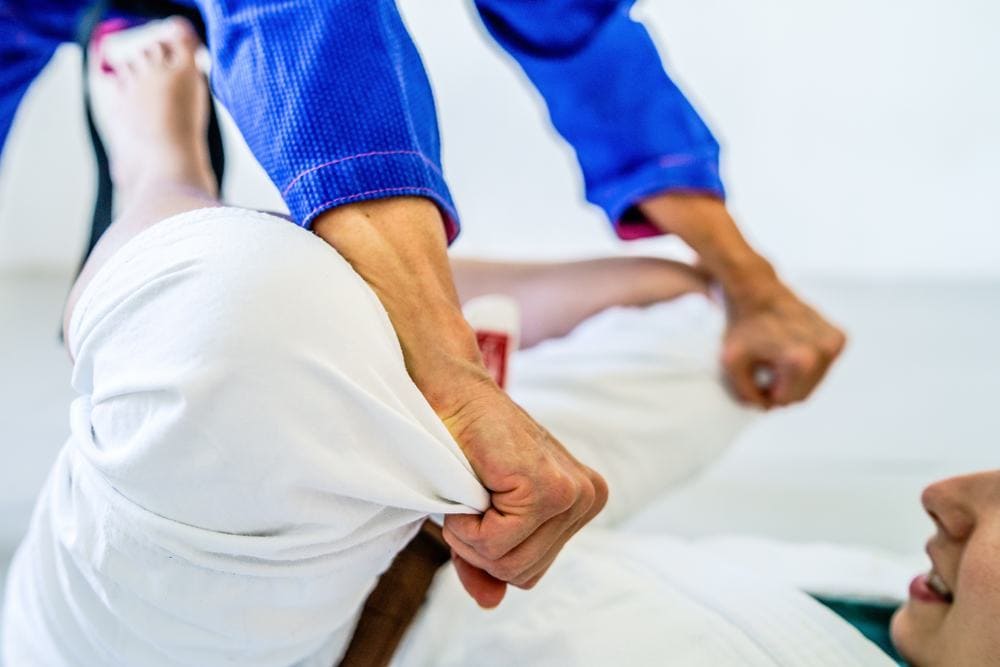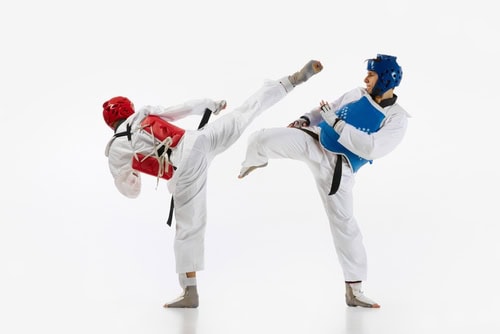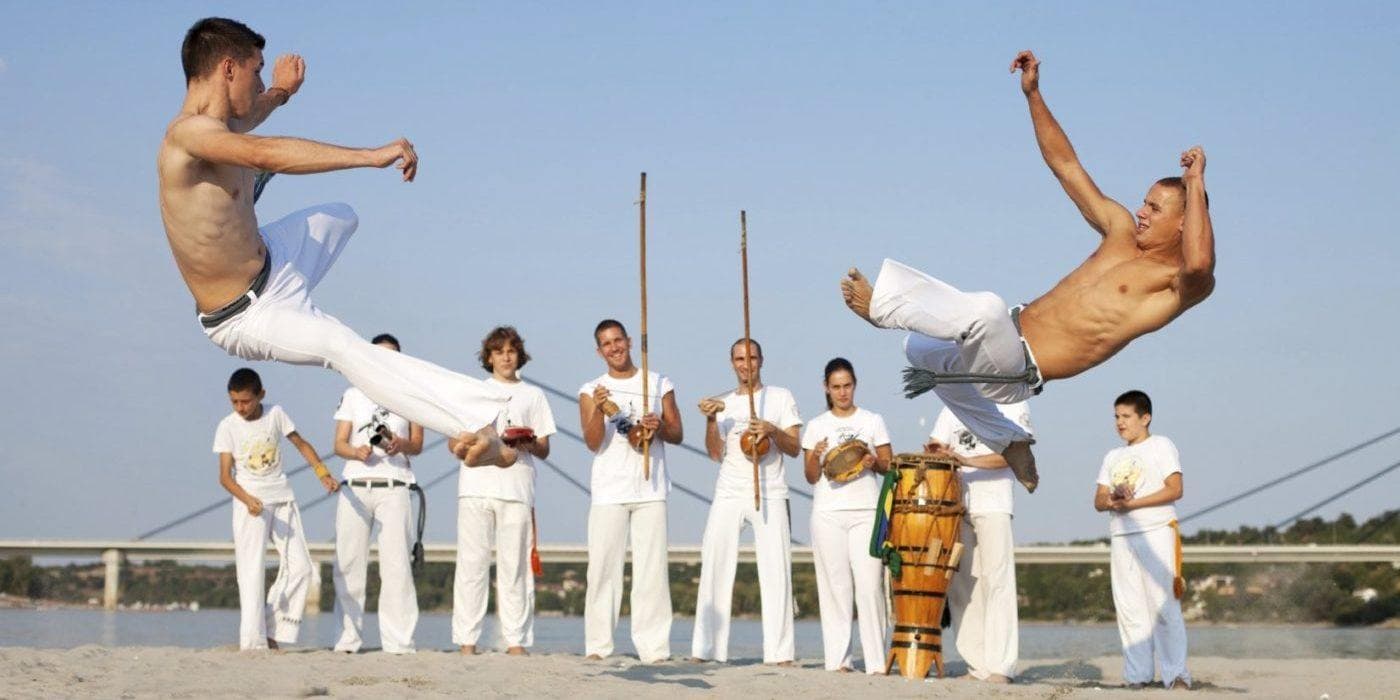I remember how overwhelming it felt when I started the process of finding a martial art. I often grappled with the question, “What is the best martial art for me?” With so many options available—such as Boxing, Brazilian Jiu-Jitsu, Karate, and Muay Thai—it was daunting to navigate through them all. That’s why I want to share my insights on how to effectively choose a martial art that aligns with your personal goals and interests.
In this article, I’ll provide an overview of the most accessible martial arts, what to expect during training, the challenges you might face while learning, the skills you can develop, and how to select the best martial art for you. My aim is to help you decide on the best fighting style to learn, making your journey into martial arts both enjoyable and effective.
The Best Martial Art You Should Learn
This article is designed to provide a broad overview of various martial arts. When engaging the different Head Instructors or Masters at the different schools, each martial art, school, and instructor will have different interpretations, approaches, expectations, and costs. The information presented should be utilized as a starting point for your ongoing research and further exploration into the best martial art you should learn.
Mixed Martial Arts (MMA)
This article is designed to provide a broad overview of various martial arts. When engaging the different Head Instructors or Masters at the different schools, each martial art, school, and instructor will have different interpretations, approaches, expectations, and costs. The information presented should be utilized as a starting point for your ongoing research and further exploration into the best martial art you should learn.
What to Expect During MMA Training
- Gear: Students wear comfortable athletic clothing, such as shorts and rash guards, which facilitate movement during training.
- Warm-up: Students begin with a series of conditioning exercises and mobility drills designed to prepare the body for intense training.
- Techniques: Students learn a combination of striking techniques from Muay Thai and grappling techniques from Brazilian Jiu-Jitsu, creating a well-rounded skill set.
- Sparring: Students participate in controlled sparring sessions with partners, applying learned techniques in real time to enhance their combat skills.
- Additional Training: Students engage in strength training, flexibility exercises, and conditioning drills to improve overall fitness and endurance.
Skills Developed from MMA Training
- Versatile Fighting Skills: Combine striking and grappling techniques effectively.
- Conditioning: Improve overall fitness and endurance for competition.
- Mental Toughness: Build resilience and adaptability in various combat scenarios.
- Progression: Typically, it may take 1 to 2 years of dedicated training to become proficient enough to compete at an amateur level, while reaching a professional level can take several years.
Is MMA the Best Martial Art for Me to Learn?
MMA is an excellent choice if you want to develop a diverse skill set encompassing striking, grappling, and ground fighting techniques. It's ideal for those who enjoy challenging themselves in multiple areas and don't mind intense training. However, it might not be the best fit if you prefer focusing on a single discipline, are looking for a less physically demanding martial art, or are more interested in traditional aspects of martial arts.
Karate
Originating in Okinawa, Japan, Karate has evolved through various influences and has become a prominent global martial art. Gichin Funakoshi is recognized as the founder of Shotokan Karate and is credited with popularizing Karate in Japan and establishing the modern form we see today. Karate is a striking martial art that emphasizes punches, kicks, knee strikes, open-hand techniques and is classified as a stand-up striking art.
What to Expect During Karate Training
- Gear: Karateka wear a traditional gi, which aids in practicing techniques safely and effectively.
- Warm-up: Karateka engage in a structured warm-up that includes stretching and basic movements to prepare for training.
- Techniques: Karateka practice kata (pre-arranged forms) that enhance precision and balance, along with sparring drills that focus on timing and distance.
- Sparring: Karateka participate in partner drills and sparring sessions to apply techniques in a controlled environment, reinforcing practical application.
- Additional Training: Karateka learn self-defense techniques integrated into sparring for real-world relevance.
Skills Developed from Karate Training
- Self-Defense: Effective techniques for defending yourself.
- Fitness: Improved strength, flexibility, and coordination.
- Focus: Enhanced mental discipline and concentration.
- Progression: It usually takes about 3 to 6 months to achieve your first belt (typically a yellow or white belt), while reaching black belt can take anywhere from 3 to 5 years, depending on the school and the student's dedication.
Is Karate the Best Martial Art for Me to Learn?
Karate is an outstanding choice if you're looking for a discipline that combines striking techniques with forms (kata) and emphasizes self-improvement. It's particularly suitable for those who need structured training with a clear progression system through belt ranks. It might not be the best fit if you're more interested in ground fighting or if you prefer a less regimented training environment.
Judo
Judo is a Japanese martial art focusing on throws and takedowns, emphasizing using an opponent’s weight and strength against them. It is classified as a ground fighting art. Developed in the late 19th century by Jigoro Kano, he established its philosophy and techniques, it has evolved into a popular sport, a foundational discipline for many self-defense systems, and received international recognition.
What to Expect During Judo Training
- Warm-up: Judoka begin training with a warm-up that includes agility and flexibility exercises to prepare their bodies for the physical demands of throws and groundwork.
- Gear: Judoka wear a gi, which is essential for executing throws and holds safely. The gi is thicker than regular athletic wear and provides grips for techniques, allowing for a more effective practice environment.
- Techniques: Judoka focus on learning various throwing techniques, grip fighting, pinning techniques, and groundwork, emphasizing the use of an opponent’s weight and strength against them.
- Sparring: Judoka engage in randori, which is live sparring that allows them to experience resistance and improve their timing and reflexes while applying learned techniques.
- Additional Training: Judoka often practice ukemi (falling techniques) to ensure safety when thrown, as well as conditioning drills to enhance overall physical fitness.
Skills Developed from Judo Training
- Throwing Techniques: Master effective throws and holds.
- Balance and Coordination: Improve your overall body awareness.
- Self-Discipline: Foster respect for opponents and the sport.
- Progression: ~6 months to achieve the first belt (yellow belt), while reaching black belt can take 3 to 5 years, depending on individual dedication and commitment.
Is Judo the Best Martial Art for Me to Learn?
Judo is an excellent choice if you want to learn how to use an opponent's strength and momentum against them. It's particularly suitable for those who enjoy close-contact grappling and want to develop balance, coordination, and core strength. However, it might not be the best fit if you're more interested in striking techniques or have pre-existing back or joint issues.
Boxing
Boxing is a combat sport focused solely on striking with punches while utilizing footwork and head movement for defense. It is classified as a stand-up striking art. With roots dating back to ancient civilizations, modern boxing has evolved into a regulated sport with various governing bodies.
What to Expect During Boxing Training
- Gear: Boxers wear boxing gloves and hand wraps, along with athletic wear that allows for comfort during training.
- Warm-up: Boxers participate in a warm-up that includes jump rope, shadow boxing, and dynamic stretching to prepare for the workout.
- Techniques: Boxers learn various punches and combinations through pad work, focusing on power and technique, as well as heavy bag work to build endurance.
- Sparring: Boxers engage in sparring sessions with partners, applying striking techniques and defensive maneuvers in real-time.
- Additional Training: Boxers incorporate conditioning exercises, such as circuit training and agility drills, to enhance overall fitness.
Skills Developed from Boxing Training
- Striking Ability: Develop powerful punches and combinations.
- Cardiovascular Fitness: Enhance endurance through rigorous conditioning.
- Mental Toughness: Build confidence and resilience.
- Progression: ~6 to 12 months to become proficient in the basics, while reaching a competitive level may take several years of training.
Is Boxing the Best Martial Art for Me to Learn?
Boxing is a fantastic choice if you want to develop powerful punching techniques, swift footwork, and exceptional hand-eye coordination. It's particularly suitable for those looking for a high-intensity workout that builds upper body strength and endurance. Boxing can be great for developing mental toughness, quick reflexes, and self-defense skills. However, it might not be the best fit if you're looking for a more diverse range of skills to modern day fighting.
Muay Thai
Known as the "Art of Eight Limbs," Muay Thai originated in Thailand and has deep roots in the country’s military history, and has evolved into a popular sport. Nai Khanom Tom, is celebrated as the "Father of Muay Thai" for defeating several foreign fighters in the 18th century, thereby showcasing the art's effectiveness. The art incorporates punches, kicks, elbows, and knees, making it a versatile stand-up striking art.
What to Expect During Muay Thai Training
- Gear: Students wear Muay Thai shorts and a tank top or t-shirt that allow for maximum movement during striking techniques.
- Warm-up: Students begin with an intense warm-up that may include running and jumping rope to prepare for rigorous training.
- Techniques: Students learn to execute a variety of strikes, including punches, kicks, elbows, and knees through shadow boxing and pad work.
- Sparring: Students participate in sparring sessions, applying their striking skills against partners to develop timing and defensive capabilities.
- Additional Training: Students engage in conditioning drills, including interval training, to build strength and stamina essential for competition.
Skills Developed from Muay Thai Training
- Striking Proficiency: Master various striking techniques.
- Conditioning: Gain strength and stamina through rigorous training.
- Discipline: Cultivate a strong work ethic and focus.
- Progression: There isn't a formal belt system, practitioners typically spend 3-5 years to become proficient enough for advanced sparring.
Is Muay Thai the Best Martial Art for Me to Learn?
Muay Thai is a strong choice if you want to develop powerful techniques using fists, elbows, knees, and shins. It's particularly suitable for those looking for an intense workout that builds strength, endurance, and mental toughness. However, it might not be the best fit if prefer a less physically demanding martial art, or are looking for a more traditional, form-based practice.
Wrestling
Wrestling is a combat sport that focuses on grappling techniques, including throws, takedowns, and holds. It is one of the oldest forms of martial arts, with a rich history and various styles practiced around the world.
What to Expect During Wrestling Training
- Gear: Wrestlers wear a singlet in some schools, which is designed to be snug and allow for a full range of motion during grappling.
- Warm-up: Wrestlers start with a comprehensive warm-up that includes dynamic stretches and drills to improve flexibility and reduce the risk of injury.
- Techniques: Wrestlers focus on learning various takedowns, holds, and escapes, with an emphasis on technique and leverage.
- Sparring: Wrestlers engage in live sparring sessions, allowing them to apply techniques against a resisting partner, which enhances their practical skills.
- Additional Training: Wrestlers participate in conditioning drills to improve strength, endurance, and agility, critical for success on the mat.
Skills Developed from Wrestling Training
- Grappling Techniques: Master effective takedowns and holds.
- Physical Fitness: Improve strength, endurance, and overall athleticism.
- Mental Toughness: Develop resilience and strategic thinking during matches.
- Progression: Usually takes several months to become proficient in the basics, with a commitment to continuous improvement necessary for advanced levels.
Is Wrestling the Best Martial Art for Me to Learn?
Wrestling is an excellent choice if you are interested in a physically intense sport that emphasizes grappling and body control. It's particularly suitable for those looking for a competitive environment and a focus on athletic performance. However, it may not be the best fit if you prefer striking techniques or a more traditional martial arts experience.
Brazilian Jiu-Jitsu (BJJ)
Brazilian Jiu-Jitsu is a grappling-focused martial art that emphasizes ground fighting and submission holds. It teaches practitioners how to use leverage and technique effectively, enabling smaller individuals to defend against larger opponents. It is classified as a ground fighting art.
Originating from Japan, BJJ was adapted in Brazil by Helio Gracie, who played a pivotal role in popularizing the art. His teachings laid the foundation for what became known as Gracie Jiu-Jitsu, focusing on practical self-defense applications and sport competition.
What to Expect During BJJ Training
- Gear: Practitioners utilize a traditional gi or a rash guard and shorts, essential for performing various grappling techniques effectively.
- Warm-up: Practitioners start with dynamic movement drills that focus on flexibility and coordination, preparing them for grappling.
- Techniques: Practitioners are taught a range of submissions, escapes, and positional controls, with hands-on practice following instructor demonstrations.
- Sparring: Practitioners engage in “rolling” sessions, where they apply techniques against resisting partners, fostering adaptability and problem-solving.
- Additional Training: Practitioners receive real-time feedback from instructors during practice, allowing for immediate improvements in technique.
Skills Developed from BJJ Training
- Self-Defense: Learn to neutralize threats through grappling techniques.
- Physical Fitness: Improve strength, flexibility, and endurance.
- Mental Resilience: Develop problem-solving skills during sparring.
- Progression: Based on the requirements set by the International Brazilian Jiu-Jitsu Federation, it typically takes around 10 years to achieve a black belt.
Is BJJ the Best Martial Art for Me to Learn?
It depends. If self-defense is your primary objective, I would highly suggest that you focus on a martial art that allows you to stay upright. Taking someone to the ground is not the best strategic approach for a street fight. You might end up in a situation where you are managing standing combatants while on your back or worse your stomach.
Krav Maga
Krav Maga is a self-defense system created by Imi ,Lichtenfeld in 1930 to enhance the self-defense capabilities of Jewish communities in Slovakia. It was later incorporated into the Israeli army. Focusing on real-world situations and practical techniques, it emphasizes efficiency and simplicity, making it accessible to anyone.
What to Expect During Krav Maga Training
- Gear: Practitioners typically wear comfortable athletic clothing, such as t-shirts and shorts, which allow for ease of movement during drills.
- Warm-up: Practitioners begin with cardiovascular exercises and strength training to prepare for the physical demands of self-defense training.
- Techniques: Practitioners learn practical self-defense techniques in a scenario-based format, focusing on reacting effectively to different types of real world scenario attacks.
- Sparring: Practitioners engage in scenario drills that may involve simulated real-life situations, enhancing their situational awareness and response to threats.
- Additional Training: Practitioners build muscle memory through repeated drills, which simulate various attack scenarios, including multiple attackers or weapon threats
Skills Developed from Krav Maga Training
- Real-World Self-Defense: Techniques are practical and straightforward.
- Situational Awareness: Learn to assess and react to threats effectively.
- Physical Fitness: Boost overall strength and endurance through intense workouts.
- Progression: There isn’t a formal belt system, practitioners typically require 3 to 5 years of training to reach a proficient level.
Is Krav Maga the Best Martial Art for Me to Learn?
Krav Maga is a very good choice if you're interested in developing situational awareness, quick reflexes, and the ability to defend against multiple armed combatants. However, it might not be the best fit if you're looking for a competitive sport, traditional martial art forms, or a less aggressive approach to self-defense.
Taekwondo
Taekwondo is a Korean martial art focusing on high, fast kicks and jumping and spinning kicks, making it visually striking. It is classified as a stand-up striking art. Developed in the mid-20th century by General Choi Hon, Taekwondo combines elements of traditional Korean martial arts with modern techniques.
What to Expect During Taekwondo Training
- Gear: Taekwondoin wear a dobok, designed for flexibility and movement during high-intensity kicking techniques.
- Warm-up: Taekwondoin start with dynamic stretches and calisthenics that prepare their bodies for rigorous training.
- Techniques: Taekwondoin practice a variety of techniques, focusing on kicking and engaging in forms (hyung) that develop rhythm and precision.
- Sparring: Taekwondoin participate in controlled sparring sessions, emphasizing control and technique over brute force.
- Additional Training: Taekwondoin learn practical self-defense techniques to enhance their combat effectiveness.
Skills Developed from Taekwondo Training
- Kicking Techniques: Master high and dynamic kicks.
- Fitness: Improve overall strength and flexibility.
- Discipline: Instill respect for opponents and instructors.
- Progression: Taekwondoin can earn their first belt (usually a yellow) within 3 to 6 months, while reaching black belt might take between 3 to 5 years.
Is Taekwondo the Best Martial Art for Me to Learn?
Taekwondo is an excellent choice if you want to develop impressive high kicks, fast-paced combinations, and overall body flexibility. It's particularly suitable for those who enjoy a structured training environment with a clear progression system through belt ranks. However, it might not be the best fit if you're more interested in close-range fighting, ground techniques, or practical self-defense applications. Or if you have physical limitations.
Kung Fu
Kung Fu is a traditional Chinese martial art known for its fluid movements, striking techniques, and rich philosophy. It encompasses a variety of styles, each with its own unique techniques and forms, emphasizing the development of both physical and mental discipline.
What to Expect During Kung Fu Training
- Gear: Students usually wear a traditional kung fu uniform, typically a loose-fitting top and pants, allowing for freedom of movement.
- Warm-up: Students begin with a warm-up that includes traditional stretching and breathing exercises to prepare both the body and mind for training.
- Techniques: Students learn a variety of striking and grappling techniques, often incorporating forms (taolu) that emphasize fluid movement and precision.
- Sparring: Students participate in controlled sparring sessions, focusing on applying techniques while maintaining respect and control.
- Additional Training: Students may also engage in practices that enhance internal energy (qi) and mindfulness, fostering a deeper connection with the art.
Skills Developed from Kung Fu Training
- Discipline: Cultivate patience and perseverance through rigorous training.
- Coordination: Improve agility and body awareness through fluid movements.
- Self-Defense: Learn effective techniques for personal protection.
- Progression: Achieving proficiency in basic forms and techniques can take several months to a few years, depending on the student's commitment.
Is Kung Fu the Best Martial Art for Me to Learn?
Kung Fu is an excellent choice if you want a martial art that emphasizes physical (combines artistry with self-defense) and mental development (rich cultural heritage). However, it may not be the best fit if you prefer a more combative or straightforward approach to martial arts.
Aikido
Founded by Morihei Ueshiba in Japan during the early 20th century, Aikido emphasizes harmony and blending with an attacker’s movements. Ueshiba developed Aikido to promote peace and reconciliation by using an opponent's energy against them, employing joint locks and throws. It is classified as a hybrid fighting art, incorporating both standing and ground techniques (most schools only train in standup).
What to Expect During Aikido Training
- Gear: Aikidoka wear a gi, and advanced practitioners may wear a hakama, which adds a traditional aesthetic and allows for freedom of movement.
- Warm-up: Aikidoka begin with a warm-up that includes stretching and basic movements to prepare the body for fluid techniques.
- Techniques: Aikidoka focus on ukemi (falling techniques), joint locks and throws, and learning to blend with and redirect an opponent's energy rather than oppose it directly.
- Sparring: Aikidoka engage in partner drills vs. sparring, where they cooperatively practice techniques, enhancing timing and distance awareness.
- Additional Training: Aikidoka often conclude their practice with meditation or reflection, promoting mental clarity and focus.
Skills Developed from Aikido Training
- Joint Locks and Throws: Learn to neutralize an opponent effectively.
- Mental Focus: Develop concentration and mindfulness.
- Physical Fitness: Enhance flexibility and coordination.
- Progression: Based on the requirements of the United States Aikido Federation, it can take approximately 5 to 8 years to achieve black belt status.
Is Aikido the Best Martial Art for Me to Learn?
Aikido is an excellent choice if you're looking for a beginner-friendly discipline that emphasizes harmony, redirection of energy, and peaceful conflict resolution by developing mindfulness, body awareness, and flexibility. However, it might not be the best fit if you seek more direct, combat-oriented techniques or competitive aspects in your martial arts practice. Or, if you need a clear progression system through colored belt ranks - some Aikido schools do not provide this visual progression.
Capoeira
Capoeira is a Brazilian martial art that combines elements of dance, acrobatics, and music, making it unique and visually captivating. It is classified as a hybrid fighting art due to its combination of striking, grappling, and dance-like movements.
Developed by enslaved Africans in Brazil as a means of resistance, Capoeira has transformed into a cultural symbol and a popular martial art. Mestre Bimba is credited with modernizing Capoeira and establishing formal training methods.
What to Expect During Capoeira Training
- Gear: Capoeiristas wear comfortable athletic clothing, such as shorts and t-shirts, which allow for the freedom needed for dynamic movements.
- Warm-up: Capoeiristas start with a vibrant and energetic warm-up that includes rhythmic movements and dance-like exercises to prepare for training.
- Techniques: Capoeiristas learn a unique blend of acrobatic movements, kicks, and sweeps, often practiced in a playful manner that emphasizes creativity and improvisation.
- Sparring: Capoeiristas participate in "jogo," or the Capoeira game, where they apply their techniques in a fluid exchange with a partner, showcasing rhythm and agility.
- Additional Training: Capoeiristas often incorporate music and cultural elements into their training, enhancing their connection to the art and its
Skills Developed from Capoeira Training
- Agility and Flexibility: Enhance your body control and movement.
- Cultural Awareness: Gain insight into Brazilian culture and history.
- Social Interaction: Build community through group training and music.
- Progression: There is no formal belt system in Capoeira, but practitioners typically take several years to become proficient in the techniques.
Is Capoeira the Best Martial Art for Me to Learn?
Capoeira is an excellent choice if you're looking for a dynamic and acrobatic art form that improves flexibility, agility, balance, rhythm, and a sense of community. It's particularly suitable for those who enjoy expressive movement and are interested in Brazilian culture and history. However, it might not be the best fit if you seek direct self-defense applications or prefer a more structured, traditional martial arts environment.
What to Consider When Deciding Which Martial Arts to Learn
- Your Goals: Identify your primary motives for learning martial arts, whether it's self-defense, fitness, discipline, or competition.
- Your Physical Abilities: Consider your current fitness level and any physical limitations that may impact your training.
- Access to Instructors and Academies: Evaluate the availability of qualified instructors and schools in your area that offer the martial arts you are interested in.
- Amount of Time You Can Dedicate: Determine how much time you can realistically commit to training, including class frequency and practice outside of lessons.
How to Choose a Martial Art to Learn?
- Explore Different Styles: Attend introductory classes in various martial arts to get a feel for what resonates with you.
- Talk to Practitioners: Engage with current students and instructors to gain insights into how to choose a Martial Art to learn.
- Assess Your Learning Style: Consider how you learn best. Do you prefer structured environments with clear progression, or do you thrive in more relaxed, creative settings?
- Visit Schools: Once you narrow down your options, visit local schools. Observe classes, assess the environment, and evaluate the instructors’ teaching styles to find the best fit for you.
Questions to Ask at a Prospective School
When you’ve narrowed down your options, it’s essential to assess the school you’re considering. Here are a few questions from our full list to ask the instructor or lead student.
- What is the Head Instructor’s training philosophy?
- How do you integrate new students into the program?
- Can I participate in a couple of classes before signing up?
- How is progress tracked?
- How often does testing occur?
While you are there, also assess the community. Is the school warm and welcoming or cold and standoffish? Did people introduce themselves? These inquiries will help you gauge whether the school aligns with your training goals and values.
Final Thoughts on the Best Martial Art to Learn
Reflecting on my martial arts journey, I've realized that choosing the right discipline is a deeply personal decision that can profoundly impact one's life. Throughout my martial arts journey, I've discovered that martial arts offer far more than just physical skills. They not only foster mental resilience, instill respect, and provide a framework for personal growth but also provide a sense of community, which has enriched my life in unexpected ways.
This is why I encourage you to explore various disciplines. Attend classes, speak with instructors, and engage with other students. This exploration is not just about finding the right fit; it's an opportunity for self-discovery.
The best martial art for you will align with your physical abilities, personal values, and life goals. Whether you're drawn to Brazilian Jiu-Jitsu, Muay Thai, Karate, Aikido, or any other discipline, there's a martial art that will challenge and inspire you.
Remember, the journey is just as important as the destination. With dedication and an open mind, you'll find a martial art that not only teaches valuable skills but also transforms you in unexpected ways.

Frequently Asked Questions
What is the Healthiest Martial Art?
The healthiest martial art improves physical fitness while promoting mental well-being. Tai Chi, for example, emphasizes slow, controlled movements and breathing, enhancing balance and reducing stress. Other martial arts like Karate and Aikido also offer health benefits, improving flexibility, strength, and mindfulness.
Which Martial Art is Worth Learning?
The best martial art to learn hinges on personal interests and objectives. For effective self-defense, Krav Maga is practical. If fitness is your focus, consider kickboxing or Muay Thai. Ultimately, aligning with a discipline that resonates with you will create a more fulfilling experience.
What is the Fastest Martial Art to Learn?
Some martial arts present a quicker learning curve. Kickboxing and Boxing teach fundamental striking techniques that can be quickly grasped. However, your learning speed will also depend on dedication and practice. Brazilian Jiu-Jitsu may require more time to master due to its intricate techniques, but the skills you acquire will be invaluable.
For the Latest Styles, Trends, News, Training Tips and Hacks on Fighting Arts Health, Wellness & Lifestyle!

